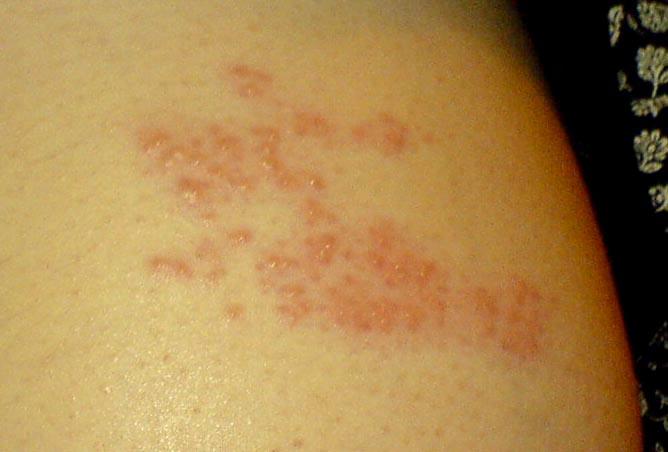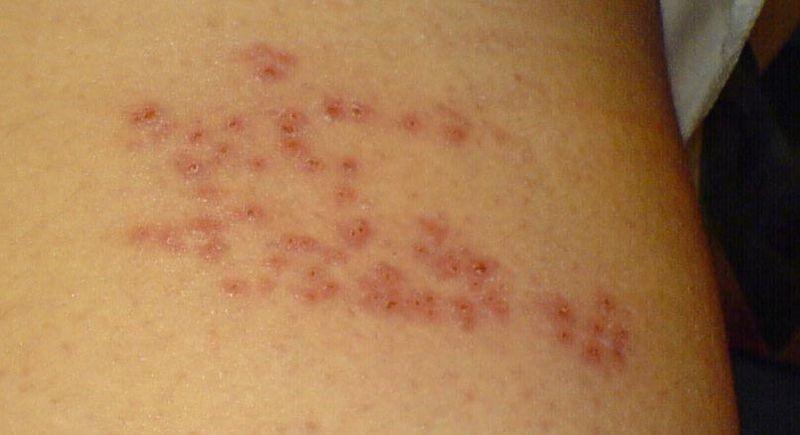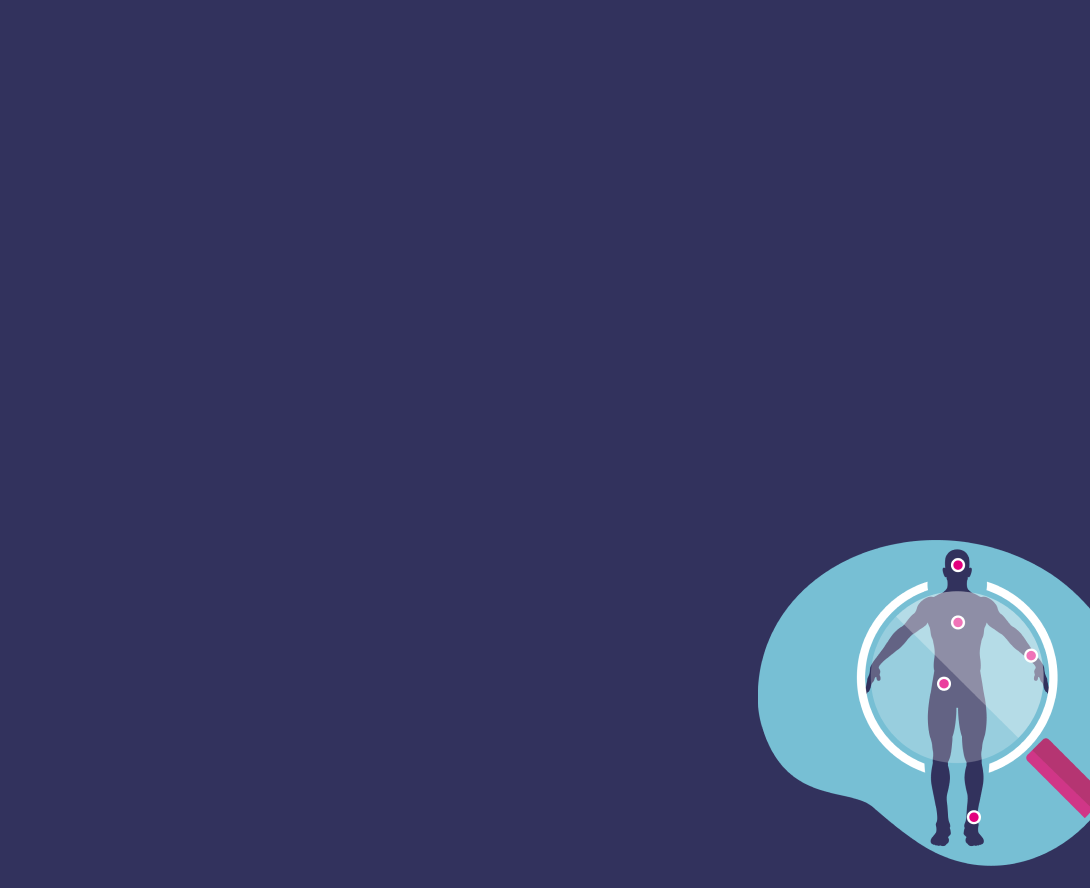Shingles
Herpes Zoster
Peer reviewed by Dr Doug McKechnie, MRCGPLast updated by Dr Philippa Vincent, MRCGPLast updated 21 Jan 2025
Meets Patient’s editorial guidelines
- DownloadDownload
- Share
- Language
- Discussion
In this series:Postherpetic neuralgia
Shingles is a rash caused by the varicella-zoster virus (the virus that causes chicken pox). After a chicken pox infection, the virus lies dormant in nerve cells and can be re-activated causing shingles.
In this article:
Continue reading below
What is shingles?
What is shingles?
Shingles (also known as herpes zoster) is a blistery rash which is often painful and which develops in one specific area of the body.
Shingles is a reactivation of the chickenpox virus but only in one nerve root. Instead of getting spots all over the body, as with chickenpox, they appear in just in one area, the area which is supplied by that nerve root. It is almost always just on one side of the body, although it may cover a large area over the skin supplied by the affected nerve.
The skin is usually painful, and this pain may start before the rash appears. The pain can continue for some time after the rash has gone. People sometimes feel tired, run down and generally unwell. It is also possible to have a high temperature or feel feverish for a few days.
Generally, the symptoms of shingles are worse in older people. Children with shingles often have no pain or other symptoms at all.
Shingles symptoms
The usual symptoms of shingles are:
Pain.
A blistering rash in one area of the body, almost always just on one side.
Shingles symptoms occur in the area of skin that is supplied by the affected nerve fibres. Occasionally, two or three nerves next to each other are affected. Very rarely, shingles can cause more widespread infection, or can affect both sides of the body, but this usually only occurs in people with a weakened immune system.
The most commonly involved nerves are those supplying the skin of the chest or abdomen. The upper face (including the eye) is also a common site.
Pain
The pain usually appears in a band around the body, usually on one side only. Where the pain is felt depends on which nerve is affected. The pain can range from mild to severe. The pain may be constant, dull, burning, or gnawing in nature. Some people describe sharp and stabbing pains that come and go. The affected area of skin may be tender.
Rash
The shingles rash starts off looking like red blotches (they may often be mistaken for insect bites initially) and quickly changes into itchy fluid-filled blisters. The individual spots look like chicken pox spots but are often closer together and can appear more angry looking. The rash only appears on the band of skin supplied by the affected nerve. New blisters may appear for up to a week.
The soft tissues under and around the rash may become swollen for a while due to inflammation caused by the virus. The blisters then dry up, form scabs and gradually fade away. Slight scarring may occur where the blisters have been.
Continue reading below
What does shingles look like?
Shingles appears as red blotches, usually on the chest or stomach. These rashes develop into blisters filled with fluid and usually only appear on one side of the body. If they appear on both sides of the body, it's much less likely to be shingles.
Shingles Day 2

Shingles Day 6 (Wikimedia Commons)

Images above by Mariegriffiths via Wikimedia Commons
How long does shingles last?
An episode of shingles usually lasts between 2 and 4 weeks. Sometimes, and particularly in younger people, there is a rash but no pain. Less commonly, there is no rash but just a band of pain.
Continue reading below
What causes shingles?
Shingles is caused by the varicella-zoster virus; this is the same virus that causes chickenpox. Most people have chickenpox at some stage (usually as a child). After an episode of chickenpox, some virus particles remain inactive in the nerve roots next to the spinal cord. They do no harm there and cause no symptoms.
For reasons that are not clear, the virus may begin to multiply again (reactivate), usually many years later. The reactivated virus travels along the nerve to the skin to cause shingles.
In most cases, an episode of shingles occurs for no apparent reason. Sometimes a period of stress or illness can trigger it. Ageing of the immune system may increase the risk of developing shingles. It is more common in older people but can occur at any age.
Risk Factors
The risk of getting shingles increases in people with a poor immune system (immunosuppression). For example, shingles commonly occurs in:
People with AIDS.
People who are taking steroids.
People having chemotherapy.
How common is shingles?
About 1 in 4 people have shingles at some time in their lives. It can occur at any age but it is most common in older adults (over the age of 50 years) and gets more common with age.
It is relatively uncommon to have shingles more than once but can happen.
Is shingles contagious?
Shingles cannot be caught from someone who has shingles. Someone who has not had chickenpox before can catch chickenpox from someone with shingles, as the fluid-filled blisters arising in shingles shed the reactivated chickenpox virus as the blisters burst. Most adults and older children have already had chickenpox and are immune from catching chickenpox again.
The shingles rash is contagious (for someone else to catch chickenpox) until all the blisters (vesicles) have scabbed and are dry. If the blisters are covered with a dressing or clothing, it is unlikely that the virus will pass on to others. This is because the virus is passed on by direct contact with the blisters.
Can I go to work with shingles?
People can work with shingles if the rash is covered with clothing. If it is in an uncovered area they can return to work once the blisters have dried up. Similarly, children with shingles can go to school if the rash is covered by clothes and the child does not feel unwell. There may be situations where there are people at high risk of becoming seriously unwell from chickenpox (for example, children who have not had chickenpox and are being treated for leukaemia) and therefore it is sensible to check with the school before making this decision.
Which groups of people to avoid if you have shingles
Pregnant women who have not had chickenpox should try to avoid people with shingles. See the separate leaflet called Chickenpox contact in pregnancy for more details. Also, people with a poor immune system (immunosuppression) should try to avoid people with shingles.
Can other people catch shingles?
No, shingles cannot be "caught". Chickenpox is contagious and can be caught from other people but shingles cannot be. Shingles develops from a reactivation of one's own chickenpox infection in the past.
Only people who have never had chickenpox are likely to be at risk of catching chickenpox from shingles. People who have had chickenpox should be immune from catching it again. If the rash is covered, the risk of anyone catching chickenpox is very low.
How to treat shingles
Two main aims of treating shingles are:
To ease any pain and discomfort during the episode of shingles.
To reduce the risks of complications of shingles.
General measures to alleviate shingles symptoms
Loose-fitting cotton clothes are best to reduce irritating the affected area of skin. Pain may be eased by cooling the affected area with ice cubes (wrapped in a plastic bag), wet dressings, or a cool bath.
A non-stick dressing that covers the rash when it is blistered and raw may help to reduce pain caused by contact with clothing. Simple creams (emollients) may be helpful if the rash is itchy. Calamine lotion can help to cool the skin and reduce mild itchiness. Suitable creams, dressings and Calamine lotion can be obtained over the counter from a pharmacy without a prescription.
Painkillers
Normal painkillers - for example, paracetamol, or paracetamol combined with codeine (such as co-codamol), or anti-inflammatory painkillers (such as ibuprofen) - are often not very helpful for shingles pain, although they can be helpful in mild shingles pain. Strong painkillers (such as oxycodone and tramadol) are not advised for this reason.
Other painkillers which act on the nerve endings are particularly useful for shingles because the pain is caused by the infection in the nerve root. If the pain during an episode of shingles is significant, or if postherpetic neuralgia (PHN) develops, these painkillers are often advised. They include:
Tricyclic antidepressants, such as amitriptyline, imipramine and nortriptyline. These tricyclic medications are rarely used to treat depression nowadays. However their action on nerve pain is very useful and they often work very well.
An anticonvulsant medicine such as gabapentin or pregabalin. They also ease neuralgic pain separate to their action to manage seizures.
If an antidepressant or anticonvulsant is advised, it should be taken regularly as prescribed. It may take up to two or more weeks for it to become fully effective to ease pain. In addition to easing pain during an episode of shingles, they may also help to prevent Postherpetic Neuralgia (PHN). See the separate leaflet called Postherpetic neuralgia for more information.
Antiviral medicines
Antiviral medicines used to treat shingles include aciclovir, famciclovir and valaciclovir. An antiviral medicine is not a cure for shingles; it does not kill the virus but works by stopping the virus from multiplying so may limit the severity of symptoms of the shingles episode.
An antiviral medicine is most useful when started in the early stages of shingles (within 72 hours of the rash appearing). However, in some cases an antiviral medicine may still be advised even if the rash is more than 72 hours old - this is particularly the case in elderly people with severe shingles, or if shingles affects an eye.
Antiviral medicines are not advised routinely for everybody with shingles. As a general rule, antiviral medication will usually be prescribed for people in the following groups:
People over the age of 50. There is more risk of developing severe shingles or complications in this age group and there is a higher chance of benefiting from treatment.
People of any age who have any of the following:
Shingles that affects the eye or ear.
A poorly functioning immune system (immunosuppression - see later for who is included).
Shingles that affects any parts of the body apart from the trunk (that is, shingles affecting an arm, leg, neck, or genital area).
Moderate or severe pain.
Severe rash.
If prescribed, a course of an antiviral medicine normally lasts seven days.
Steroid medication for shingles
Steroids are usually used to reduce inflammation. Some people think that steroid tablets (prednisolone) may help to reduce pain and speed healing of the rash. However, the use of steroids in most cases of shingles is controversial and they are not routinely recommended. There is no evidence that they prevent post-herpetic neuralgia.
If shingles occurs with facial weakness, a course of oral steroids is usually given (see section on 'Complications of shingles' below).
Are there any tests for shingles?
The rash can usually be recognised by its typical pattern and symptoms. Occasionally the diagnosis is unclear and a swab can be done to look for the varicella zoster virus. However this is rarely needed.
When to see a doctor about shingles
People with shingles should have a medical review to confirm the diagnosis and to decide whether treatment is necessary. This may be possible via a remote consultation with photographs of the rash.
Urgent medical advice should be sought if:
There is also a poor immune system (immunocompromise).
Shingles is on the face or limbs.
Shingles is affecting the ears or eyes.
There is any facial weakness.
Shingles and pregnancy
Chickenpox in pregnancy can cause significant problems, depending on when in the pregnancy it occurs. However, with shingles in pregnancy, there are rarely complications affecting either the mother or the baby. Usually conservative treatment is advised but some women may need antiviral treatment; an obstetrician should be able to advise about this.
What if I have shingles and a poor immune system?
People with a poor immune system (immunosuppression) who develop shingles should seek urgent medical advice. Antiviral medication would normally be recommended. People with a poor immune system include:
People taking high-dose steroids. (This means adults taking 40 mg prednisolone (steroid tablets) per day for more than one week in the previous three months, or children who have taken steroids within the previous three months, equivalent to prednisolone 2 mg/kg per day for at least one week, or 1 mg/kg per day for one month.)
People on lower doses of steroids in combination with other immunosuppressant medicines.
People taking anti-arthritis medications which can affect the bone marrow.
People being treated with chemotherapy or generalised radiotherapy, or who have had these treatments within the previous six months.
People who have had an organ transplant and are on immunosuppressive treatment.
People who have had a bone marrow transplant and who are still immunosuppressed.
People with an impaired immune system.
People who are immunosuppressed due to uncontrolled HIV infection.
Complications of shingles
Most people who get shingles do not have any complications. Those that sometimes occur include the following:
Postherpetic neuralgia (PHN)
This is the most common complication of shingles. It is where the nerve pain (neuralgia) of shingles persists after the rash has gone. See the separate leaflet called Postherpetic neuralgia for more details.
Skin infection
Occasionally the rash becomes infected with bacteria. The surrounding skin then becomes red, hot and tender (although this can happen in severe shingles without a skin infection). If a secondary bacterial skin infection occurs this would be treated with a course of antibiotics.
Eye problems
Shingles of the eye can cause inflammation in front of the eye. In severe cases it can lead to inflammation of the whole of the eye which may cause loss of vision. People with shingles affecting the eye should always be seen by an ophthalmologist.
Ramsay-Hunt syndrome
Ramsay-Hunt syndrome is a condition caused when shingles affects the facial nerve. It presents with a shingles rash affecting the ear; the rash is often inside the ear as well and can be inside the mouth. There is often pain in the ear. There is weakness of the same side of the face. This is known as Bell's palsy. About 20% of Bell's palsies are thought to be caused by Ramsay-Hunt syndrome. Steroids and anti-viral medication together have been shown to be of benefit in Ramsay-Hunt syndrome, particularly when started early. Ramsay-Hunt syndrome is most common in people between the ages of 60 and 80 and is very rare in children. Complications of Ramsay-Hunt syndrome can include hearing loss, tinnitus and permanent facial weakness.
Weakness (Palsy)
As described above with Ramsay-Hunt syndrome causing Bell's palsy, sometimes the nerve affected is a motor nerve (ones which control muscles) and not the more common sensory nerves (ones for touch). This may result in a weakness (palsy) of the muscles that are supplied by the nerve.
Various other rare complications
There are very rare complications of shingles which include encephalitis or meningitis (infection of the brain by the varicella-zoster virus), or spread of the virus throughout the body. These are very serious but rare.
It is important to note that if you develop any symptom in addition to the pain and rash of shingles, such as a change in vision, hearing loss, weakness or numbness in other parts of the body, you should tell your doctor. Such symptoms may be caused by complications of shingles, which may require treatment, or there could be an another cause that may require investigation and management.
Is there a shingles vaccination?
In the UK there is a shingles vaccine immunisation programme for people aged between 70 and 79 years to protect against herpes zoster.
People who are 65 on or after 1 September each year are also eligible for the shingles vaccine that year. People with a severely weakened immune system are eligible for the shingles vaccine from 50 years of age.
There are two versions of the shingles vaccination; Zostavax® and Shingrix®. The inactivated vaccine, Shingrix®, is now the vaccine that is provided in the UK.
The chickenpox vaccine is thought to give immunity against chickenpox whilst also reducing the chance that the varicella zoster virus will remain dormant in the nerve root. Therefore, it is thought that people who have the chickenpox vaccine will be at much lower risk of shingles in the future. However, it has also been shown that exposure to children with chickenpox reduces the risk of activation of the virus to cause shingles in older people. Adults who have been in contact with a child with chickenpox in their home are 30% less likely to develop shingles over the next 20 years than those who have not had that contact. The chickenpox vaccine has been recommended to be rolled out in the UK as part of the routine childhood vaccination programme (though has not yet been approved by the government). The shingles vaccine will become more important as chickenpox becomes less common in children.
Patient picks for Skin infections

Infections
Impetigo
Impetigo is a common infection of the skin. It is contagious, which means it can be passed on by touching. It is quite common in young children but it can affect anybody of any age. Antibiotic cream usually clears this type of skin problem quickly. Antibiotic tablets or liquid medicines are sometimes needed.
by Dr Rachel Hudson, MRCGP

Infections
Viral skin infections
Viral skin infections are a wide group of conditions. They can be a reaction to a virus inside your body, or they can be an actual infection of your skin. They range from the entirely harmless, to the quite serious (but not usually life-threatening). Some are contagious; others you can touch without catching.
by Dr Toni Hazell, MRCGP
Further reading and references
- Immunisation against infectious disease - the Green Book (latest edition); UK Health Security Agency.
- Shingles; NICE CKS, September 2024 (UK access only)
Continue reading below
Article history
The information on this page is written and peer reviewed by qualified clinicians.
Next review due: 20 Jan 2028
21 Jan 2025 | Latest version

Ask, share, connect.
Browse discussions, ask questions, and share experiences across hundreds of health topics.

Feeling unwell?
Assess your symptoms online for free
Sign up to the Patient newsletter
Your weekly dose of clear, trustworthy health advice - written to help you feel informed, confident and in control.
By subscribing you accept our Privacy Policy. You can unsubscribe at any time. We never sell your data.